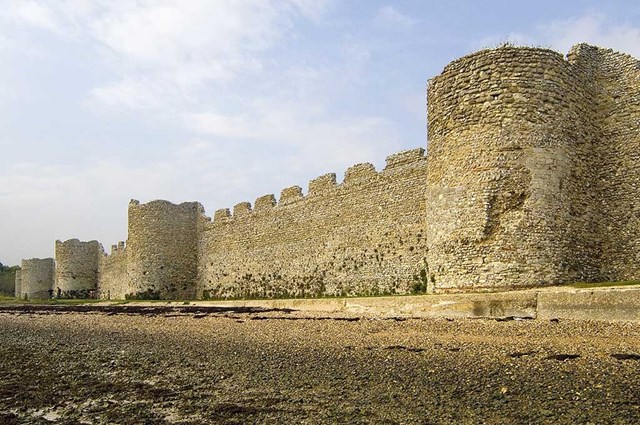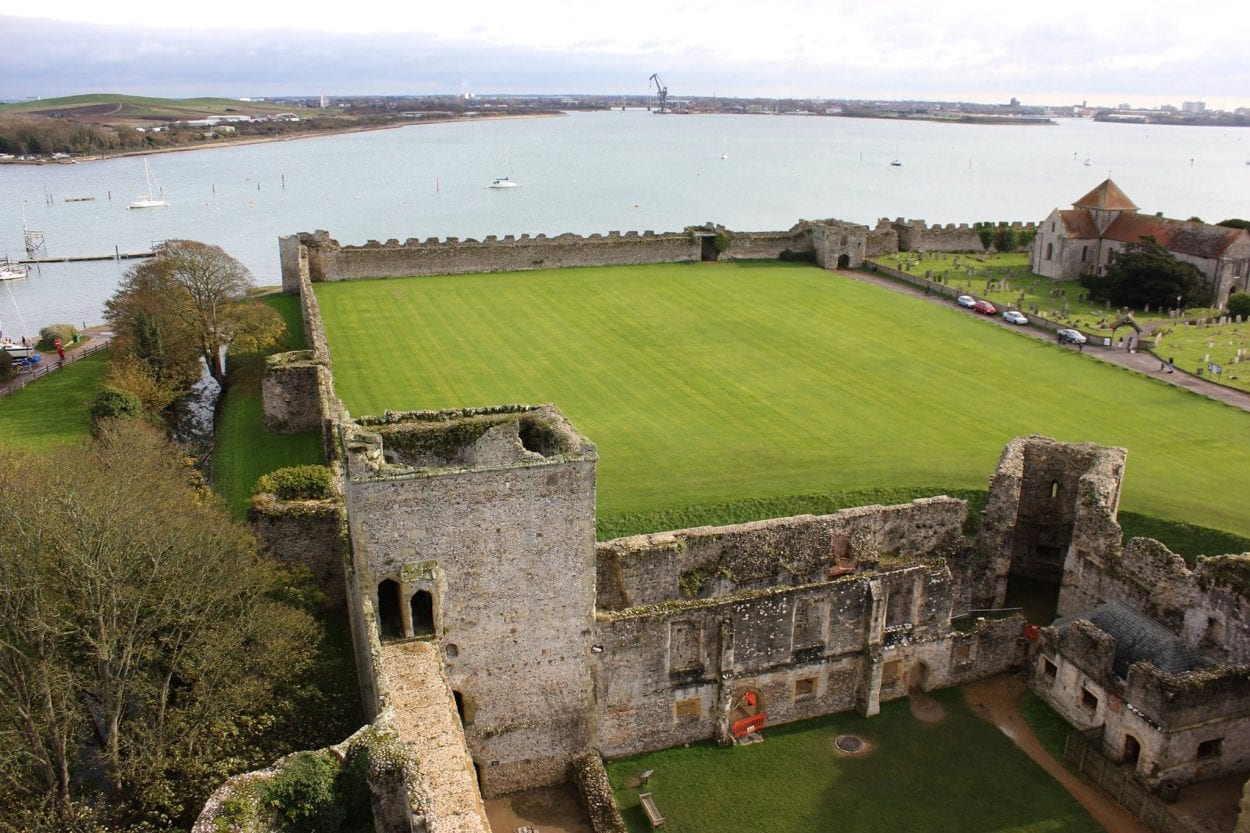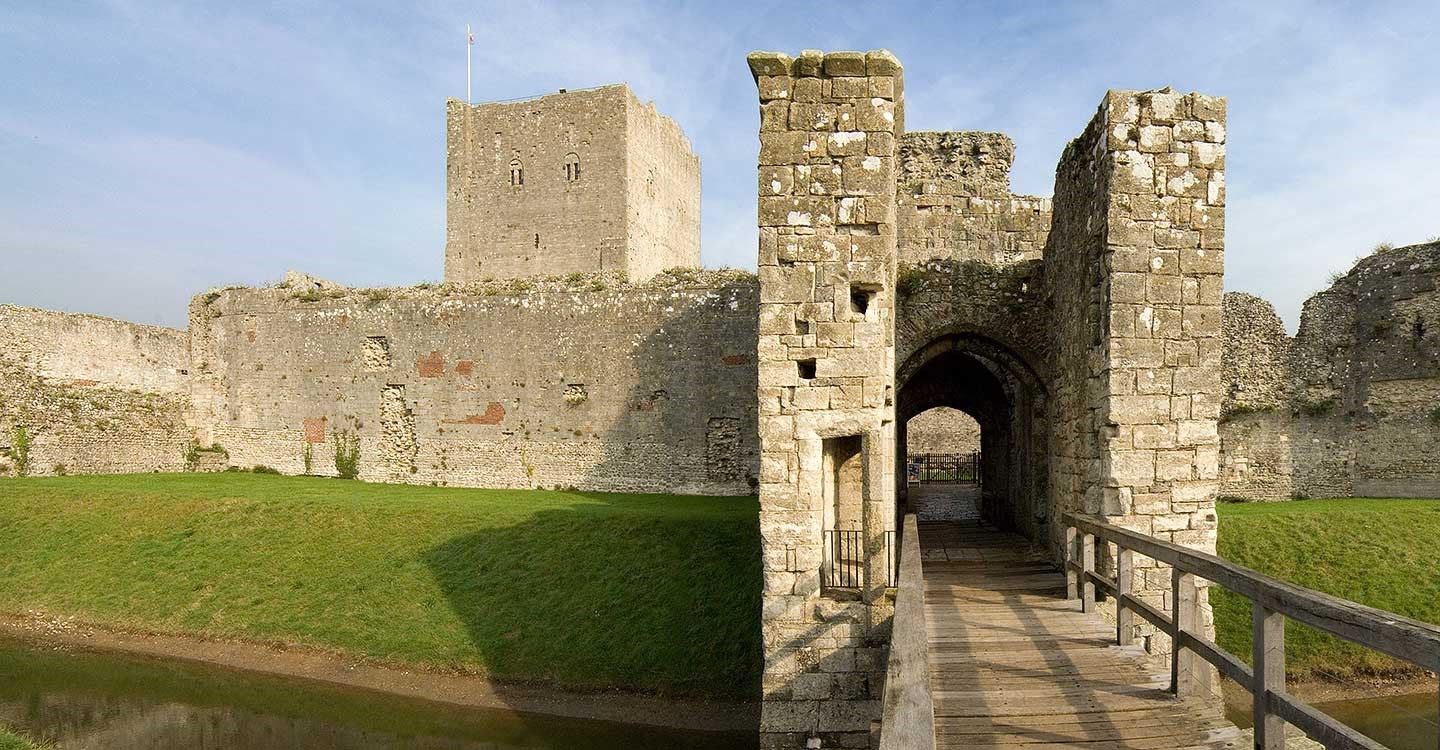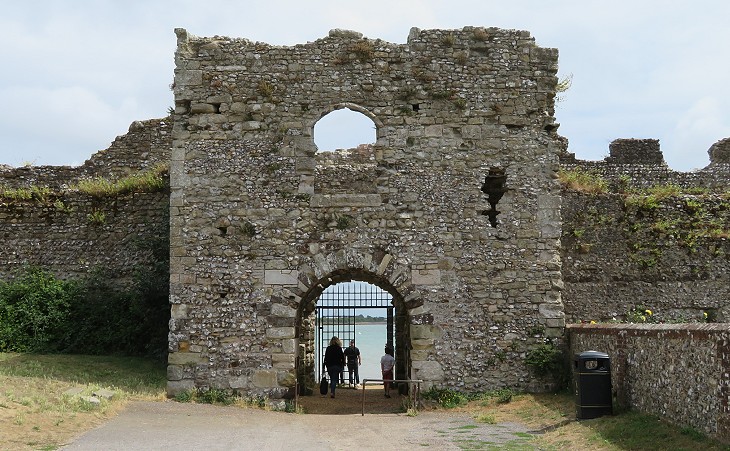Portus Adurni, located at the head of Portsmouth Harbour, is a landmark of historical and architectural significance. Built in the 3rd century CE during Roman Britain, it remains one of the most impressive examples of Roman military engineering. Over time, this fortress evolved into Porchester Castle, merging ancient Roman ingenuity with medieval fortifications.
The Roman Roots of Portus Adurni
Constructed as part of the Saxon Shore fortifications, Portus Adurni was designed to protect Britain’s southern coastline from Saxon raids and other threats from the sea. The fort’s strategic location allowed the Romans to oversee maritime activities and deploy forces rapidly to counter invasions.

Engineering Excellence
The Roman builders employed advanced techniques, creating outer walls that still stand today. Measuring 6 meters in height, 3 meters in thickness, and stretching for 200 meters, these walls demonstrate the resilience of Roman construction. The fort covered 9 acres, making it one of the largest and most enduring Roman structures in Britain.

From Roman Fortress to Porchester Castle
In the Medieval period, Portus Adurni was transformed into Porchester Castle, reflecting the changing needs of the time. The Normans adapted the site to serve as a military stronghold and administrative center. Key features of the medieval castle include:

The Great Keep
Added during Norman rule, the keep served as a residence for lords and a final defensive stronghold.

The Inner Bailey
A space used for garrisoning troops and storing supplies during sieges.

Integration of Roman Walls
The original Roman walls were reinforced, highlighting the practicality of repurposing ancient structures for medieval defense.

Historical Significance Across Ages
Porchester Castle played a vital role in various historical events:
Medieval Campaigns
Kings such as Edward III and Richard II used the castle as a base for launching military operations.

Prison of War
During the Hundred Years’ War, the castle housed French prisoners, and later, during the Napoleonic Wars, it served a similar purpose.
These layers of history showcase the site’s adaptability and importance through centuries of warfare and governance.
Legacy of Portus Adurni
As the oldest standing Roman fort north of the Alps, Portus Adurni is a testament to the durability of Roman engineering and its integration into later medieval architecture. The seamless blending of ancient and medieval elements at Porchester Castle offers a unique window into the evolution of military design.

Visiting Porchester Castle Today
Now managed by English Heritage, Porchester Castle is a popular destination for history enthusiasts and tourists. Visitors can:
Explore the preserved Roman walls and medieval additions.
Climb the Great Keep for stunning views of Portsmouth Harbour.
Learn about the site’s rich history through interactive exhibits and guided tours.

A Monument of Resilience and Ingenuity
Portus Adurni stands as a symbol of strategic foresight and architectural brilliance, bridging the Roman and medieval eras. Its enduring walls and layered history continue to inspire awe, making it a must-visit site for anyone interested in the rich heritage of Britain.

